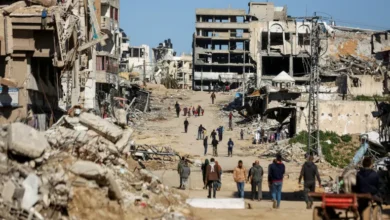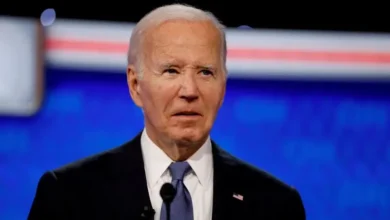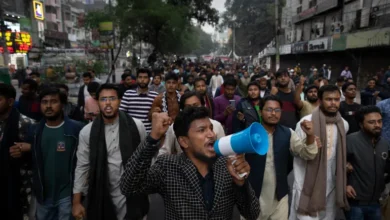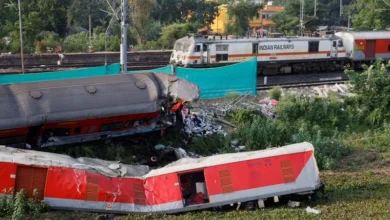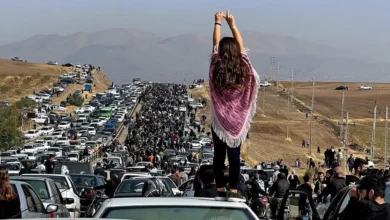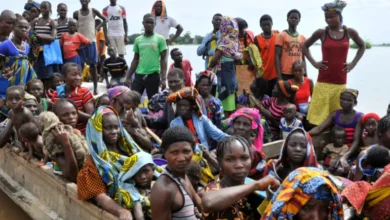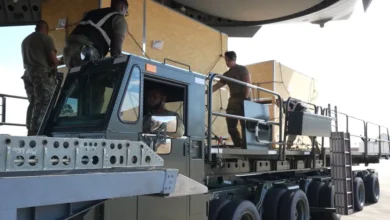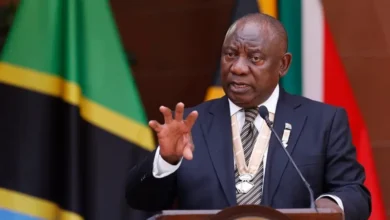‘They could have done more’: Zimbabweans slam gov’t anti-cholera campaign

When Priscilla Moyo’s husband Brian returned home to Harare from Mvurwi, about 100km north of the capital on Sunday night, he seemed well. By 11pm, he was battling diarrhoea.
When his situation was still the same on Tuesday morning, 39-year-old Moyo took him to a nearby clinic in Budiriro, the city suburb where they live. On arrival, she was told that her husband had cholera.
“He is being treated right now in there,” she said dejectedly pointing in the direction of a grey tent, a makeshift treatment ward at the clinic. “He is on an intravenous drip and they say he might go home today.”
Across Zimbabwe’s 10 provinces, a deluge of cases of cholera infections is crippling health facilities in the Southern African country. Some patients like Brian, have recovered.
Others have not been as lucky.
Jessica Muzambezi, a young mother in the same suburb, lost her two-year-old son to cholera. “A burst sewer in my area caused the death of my son. The authorities did not attend to the sewer for two weeks,” she told Al Jazeera.
As of Tuesday, 25,780 cases of cholera have been recorded in Zimbabwe since the epidemic began last year. While the official government death toll stands at 470, the United Nations Children’s Fund (UNICEF), which is coordinating the mobilisation of resources for the anti-cholera campaign in conjunction with Zimbabwean authorities, put the number at 528. Children remain the most vulnerable, with a third of all cases affecting youngsters aged 15 and below.
And many Zimbabweans say the government is to blame.
A persistent problem
Zimbabwe’s sewage system, part of its inherited colonial infrastructure, has been overwhelmed as the population grew from about 3.7 million in 1960 to 17 million today. And potable water remains unavailable in many parts of the country, as the struggling economy is yet to update that infrastructure.
That, experts say, has made it easy for cholera, an infectious disease primarily transmitted through contaminated water or food, to spread rapidly.
In 2008, as many as 4,000 people died from cholera in the country during what is regarded as one of the worst episodes of the epidemic on the continent. Then, like now, the public health crisis was caused by poor sanitation and a lack of clean water. It was worsened by a crumbling healthcare system that deteriorated as the world’s worst hyperinflation crisis – peaking at 79.6 billion percent on a month-to-month basis – surged in Zimbabwe, rendering the local currency useless.
The government of then-president Robert Mugabe blamed Western governments for the disease outbreak. Senior officials in his administration said the cholera epidemic was the outcome of a “serious biological chemical war” and a “calculated racist terrorist attack” being waged against Zimbabweans.
More than 15 years later, the city is facing another public health crisis, with the capital being the hot spot again.
While infections are rising nationwide, Harare, the country’s most populous province, has the highest concentration of new cases, accounting for a third of the total.
A quick drive around southern suburbs of the city like Budiriro, Glen View, and Highfield reveals dozens of tents donated by the World Health Organization (WHO) being manned by local health professionals.
Zimbabwean authorities have also been distributing vaccines to minimise the impact of the epidemic. The country has received 97 per cent of the 2.3 million doses approved by the International Coordinating Group on Vaccine Provision( ICG) as of February 12, with more to come later in the month. According to UNICEF, 1.5 million people (67 percent of the target population) had received an oral cholera vaccine (OCV) dose as of February 14.
In January, the health ministry launched Operation Chenesa Harare – a campaign named after the Shona word for “clean up” – after residents resorted to using undesignated dumping sites to cope with piling rubbish. Some say the garbage was left to pile up in the first place because not enough resources had been allocated on time.
‘It’s only fiction’
But there are fears that the mitigation efforts are coming too late and just as importantly, do not tackle the root of the problem. Some experts and activists also argue that the authorities have yet to learn lessons from the past.
Joyleen Nyachuru, a resident of Glen View and a community water alliance leader, is one of them. She blames local and central governments for the latest epidemic.
“They could have done more to minimise the impact of cholera on residents by coming together to contain raw sewer leaks and should have worked together to upgrade the old sewer infrastructure that continues to break down,” Nyachuru told Al Jazeera.
“In Glen View, we have 12,800 houses and each house has four to five households. This means each house houses 15 to 20 people using the same house and the same toilet,” she said, adding that the authorities need to provide clean potable water to every resident of the city to curb cholera.
For years, the city has not pumped water to many Harare households. Now, water flows through the taps once a week in most southern suburbs. Rubbish is still a common presence on street corners in the city despite government intervention.
This, according to Nyachuru, has also compounded the cholera situation.
Precious Shumba, director of the nonprofit Harare Residents’ Trust agrees.
“The major problem is that underground water and sewerage pipes are aged and sand blocked, resulting in numerous leakages along the water and sewerage infrastructure network,” Shumba told Al Jazeera, adding that sewer bursts in industrial areas of the city also stay unfixed for long periods.
But Harare Mayor Jacob Mafume said in addition to the vaccination programme, city authorities have intensified sewer repairs and are working on improving potable water supply to the city. Things would change for the better soon, he told Al Jazeera.
“The numbers have gone down significantly and we are confident we will turn the cholera tide,” Mafume said.
But his comments have not pacified most residents of the city who say they are now used to flowing sewage and being forced to find their own solutions.
“On the ground, the authorities are doing nothing … when the city says it will fix or is fixing our problems, it’s only fiction,” Nyachuru said. “They [officials] were only on the ground during the Chenesa Harare campaign. After the campaign, nothing has been happening.”
